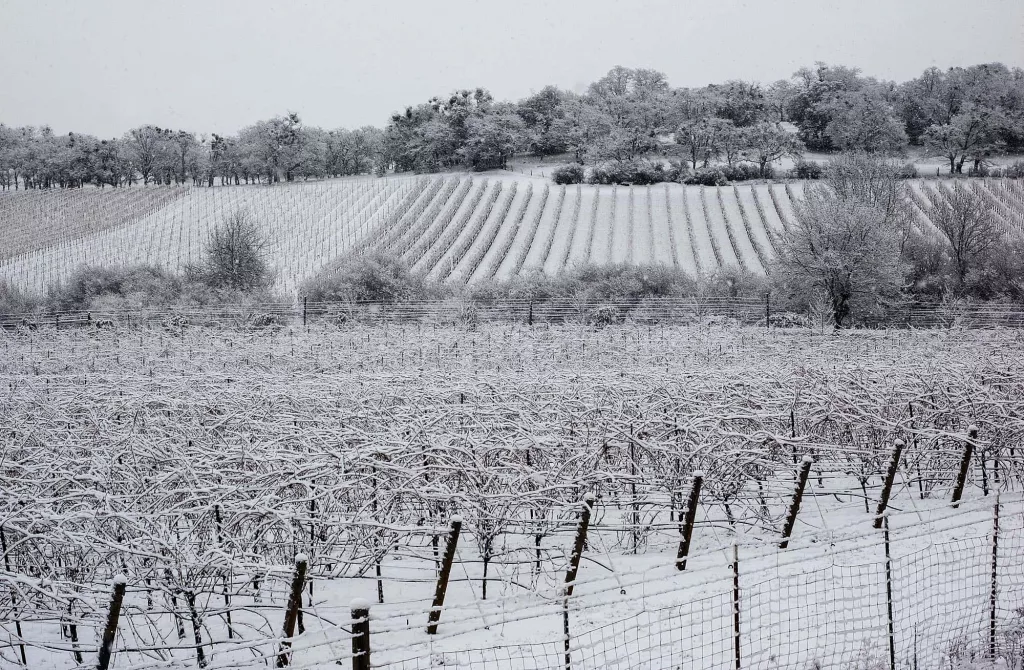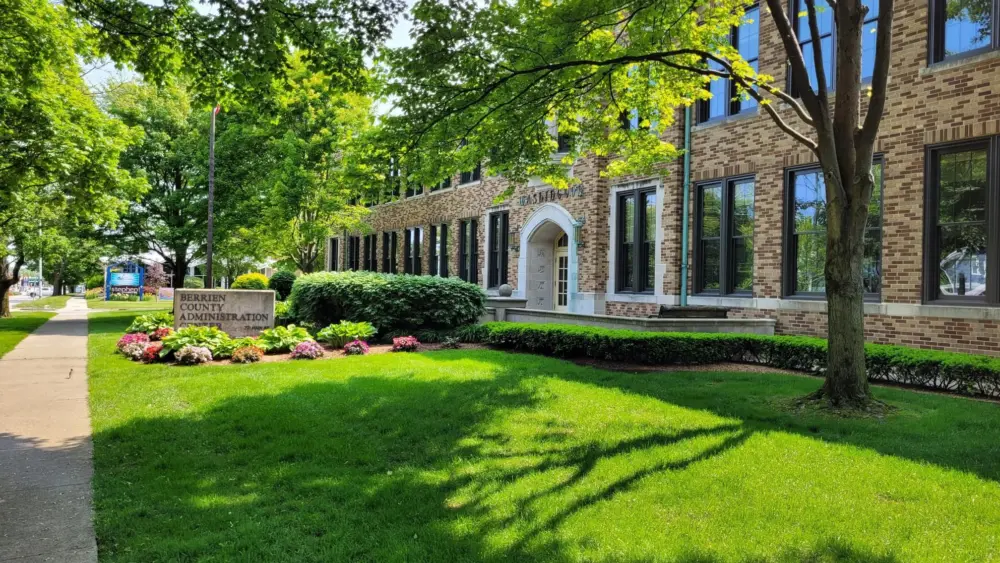If you are a winemaker or fruit grower in Michigan’s Great Southwest, the New Year has already ushered in some very nervous overnight hours and with frigid weather predicted to stick around until nearly the middle of the month, there may be more sleepless nights on the horizon, as well.
Round Barn & Tabor Hill winemaker Matt Moersch was first to sound the alarm this morning registering overnight lows all the way down to minus-9-degrees before dawn moderated those temperatures a short while later. I reached out to ask him about his concerns and he responded that the cold weather is, “Not great for grape growers.” He added, “Will survive with the snow insulation, but a potential for bud loss. Not good.”
Dr. Dave Miller from White Pine Winery concurred that, “It is definitely cold out! And, as you point out, anytime temperatures get this low the fruit growers get nervous.” He adds, however, “So far, the temps have not been low enough to do any serious damage to grapevines that were properly managed – not too much crop and a good spray program so the leaves stayed healthy.” Miller, who is also an instructor at Michigan State University says, “The temperature needs to go below zero before damage to buds and canes occurs. And the actual temperatures that cause damage vary with the grape variety and tissue in question. For example, Merlot vines start to see bud damage at about – 5F and then cane damage at – 7. They are one of the least resistant to low temperatures of the Vitis vinifera that is grown in the area. Riesling is one of the most cold hardy of the vinifera. Bud damage doesn’t begin until around -10 with cane damage at around -12. The damage range is very narrow. So if buds start getting damage at -10 F, there is likely 100% damage around – 13 F.”
Lake Michigan College Professor of Viticulture Mike Moyer and head of the college’s winemaking program says, “Anytime it gets below zero, there are concerns.” Like Dr. Miller, Moyer says, “Some varieties are more susceptible to cold damage than others. Merlot and Syrah tend to be a bit more tender than Riesling and Pinot Noir.” Moyer notes, “Because cold air tends to flow downhill, vineyards at higher elevations and on hillsides tend to suffer less winter damage than vineyards on lower and flatter ground.”
Dr. Miller recalls, “The winters of 2014 and 2015 both saw low temperatures around – 16F which is why there was so much damage those years and so little crop. Those temperatures occurred both years after Lake Michigan froze over 80-percent of its surface which essentially stopped Lake Effect snow. The Lake Effect clouds act like a blanket in the atmosphere, trapping heat below them. And even though 5 degrees is cold, it is usually 10 to 15 degrees colder where there is no Lake Effect like in South Bend or on the other side of Lake Michigan.”
Michigan State University Extension Fruit Educator Mark Longstroth concurs that, “It is too early to tell, but my hunch is that there will be some minor winter damage to the more sensitive varieties planted in the less favorable vineyard sites. Fortunately, we didn’t get any colder!” Longstroth adds, “Low or flat areas way from the Lake fell into the minus teens while most other areas especially close to Lake Michigan did not go below zero.” He was referring to overnight temperatures recording early Monday morning, but didn’t have data yet on this morning’s cold conditions. A chart that he shared showed the most severe cold in the region on New Years morning hit Allegan County where temperatures shortly after midnight plummeted to 12 and 13 degrees below zero for a couple of hours before bouncing back. The coldest temps in Berrien County struck around Watervliet and in Bainbridge Township where readings of 5 to 6-degrees below zero hit briefly after the midnight hour before warming back up.
White Pine’s Dr. Miller says, “On the positive side, temperatures below freezing keep the vines and other woody plants dormant. When temperatures are above freezing in winter, the woody plants have an internal clock that measures those warm periods. When the plant has experienced enough warm days it begins to come out of its dormancy. If the winter is very mild, the woody plants start growing too early and get damaged by frost in spring. That’s what happened in 2012 when there was no ice on the river or inland lakes all winter. There was virtually no crop of cherries, peaches, apples, etc. that year. So this cold snap is not a problem so far.”
While we may not all appreciate the lake effect snowfalls we’ve been racking up, Dr. Miller suggests, “We just need to keep our fingers crossed that the cold doesn’t last long enough for Lake Michigan to freeze over and stop Lake Effect. That or another visit by the polar vortex could drop temperatures to damaging levels that no one wants to see.”
Fruit Educator Longstroth says, “I say you should grow wine grapes where you would grow peaches or sweet cherries (they are also sensitive to winter cold).” He notes, “All the Concord and Niagara grape acreage is grown on poorer sites but they can stand -15 for Niagara and -25 for Concord, so those people who think we can just replace the Concord acreage with wine grapes don’t understand the influence of the site on orchard and vineyard site selection.”
Regardless of what happened overnight these first couple of days of the New Year, there will be many an anxious night for fruit growers, vineyard managers and wine makers all hoping to keep any potential damage at bay in what can prove to be an awfully long winter when temperatures turn too far south. Stay tuned.






